The History of Coffee
Coffee has been around for centuries, but it wasn’t until the 15th century that it gained widespread popularity. From its discovery in Ethiopia to its global rise as a staple beverage, coffee has become an essential part of many people's lives.
It is one of the most popular drinks in the world and is enjoyed by millions every day. This blog will explore how coffee became so widely consumed and why organic coffee beans continues to be a favourite among consumers today.
Where did coffee originate
It seems it all begins with Ethiopia's coffee origin myth. The myth states that coffee originated in the Ethiopian province of Kaffa sometime during the ninth century. According to this Ethiopian legend, a goat herder named Kaldi noticed his flock becoming increasingly energetic after eating the berries from a certain shrub. Intrigued by this observation, Kaldi tried the bright red berries himself and found that they gave him an extra burst of energy, too. Kaldi shared his discovery with the local monastery, and word soon spread throughout the region. People began to brew the berries into a fragrant brown liquid that helped them stay alert during long hours of prayer. Thus, coffee was born! Over time coffee made its way to Egypt and Yemen, going on to become a popular commodity throughout the Arab world.
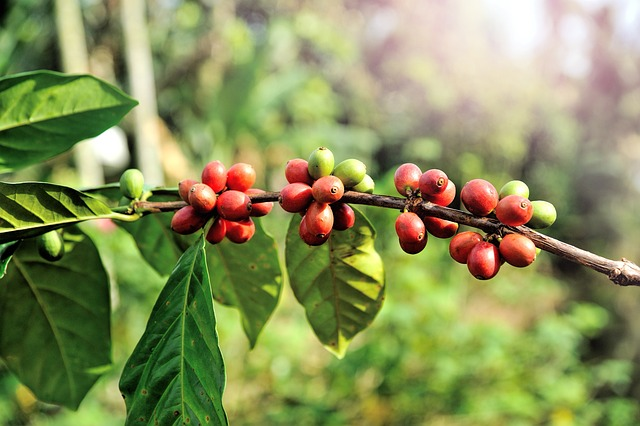
Coffee consumption in the Middle East
Coffee is an integral part of Middle Eastern culture, with some countries having a rich history in coffee cultivation alongside the preparation and consumption of this beloved beverage. In many places, coffee is more than just an ordinary drink: it’s a way to make connections and share stories.
Turkish Coffee
In Turkey, coffee has been a part of the culture for centuries. The traditional drink is known as Turkish coffee, and it’s made by grinding fine arabica beans into a powder, boiling it in water with sugar or other flavorings and serving it in small cups. This method of preparation creates a very strong and flavorful beverage that many people around the world enjoy.
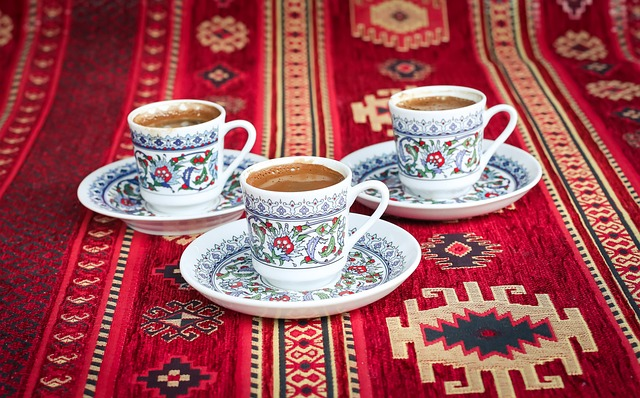
Qahwa of Saudi Arabia
In Saudi Arabia, coffee drinking is a popular pastime. The traditional Saudi drink of choice is qahwa, which is often made with cardamom and served in small cups. Qahwa has a unique flavor that sets it apart from other Middle Eastern coffees and people will often gather in cafes to enjoy the beverage and socialize.
Coffee in the UAE
In the UAE, coffee is a way of life. Cafes are plentiful and often have unique menus offering both traditional Middle Eastern drinks and international favourites like espresso and cappuccino. Coffee has been deeply ingrained in the culture for centuries, with many Emiratis gathering around tables to sip on aromatic cups of freshly brewed java and chat about the day’s events.
No matter where you are in the Middle East, it is likely that coffee plays a role in everyday life. Whether it’s served from a traditional coffee pot or a modern espresso machine, coffee has become an important part of the culture, bringing people together and providing comfort and warmth.
Coffee makes its way to Europe
The story goes that in 1645 after coffees quick spread throughout the East, a Turkish traveller named Baba Budan smuggled seven coffee beans when travelling through Turkey and took them to Europe.
Coffee houses in Italy
The introduction of coffee to Europe is a matter of debate, but many sources point to the city of Venice, Italy as the place where it first arrived. Venetian merchants are believed to have been the first Europeans to obtain coffee beans and distribute them across the continent in the 16th century.
Coffee houses began opening in the 17th century. Venetians embraced the beverage as a way to socialize, discuss politics, and debate literature. The unique blend of coffee served in Venice is what makes it so distinct from other parts of Italy. Not only is the flavour unique, but so is the typical preparation used in Venice – resulting in a cup of that’s smooth and creamy hints of nuttiness.
Café culture in France
Coffee has a long history in France, dating back to the 17th Century. The first coffee shop in Paris was opened in 1672, and slowly but surely, coffee began to spread throughout France. The popularization of coffee in France gained traction during the 18th century when the café culture started to become more prevalent. Cafés and coffee houses were places where people gathered to talk, debate and share ideas. As coffee drinking rose, so did the demand for new types of drinks, including cappuccino, latte and mocha. Coffee soon became a staple in French culture and its popularity continues to this day.
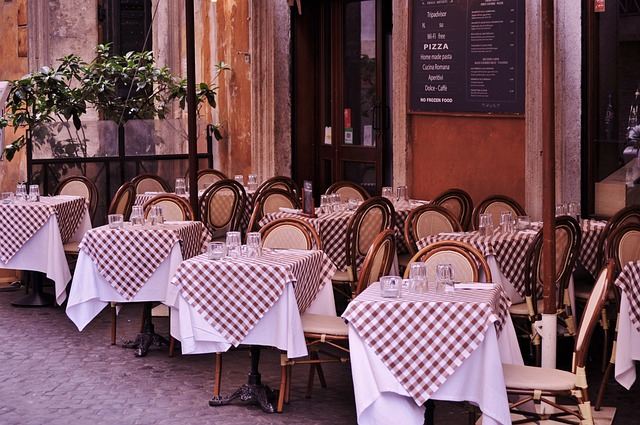
Coffee history of Vienna
Vienna has a rich and unique history when it comes to coffee. As far back as the 1683 siege of Vienna, coffee has been enjoyed by Viennese citizens and visitors alike. The drink was brought to Vienna by merchants from the Ottoman Empire who were fleeing the city prior to its successful defense against the Turks. Since then, coffee has become a staple of the Viennese diet, with many cafes and coffee houses throughout the city. One such cafe, Cafe Central, remains open to this day and is renowned for its traditional coffee-drinking culture.
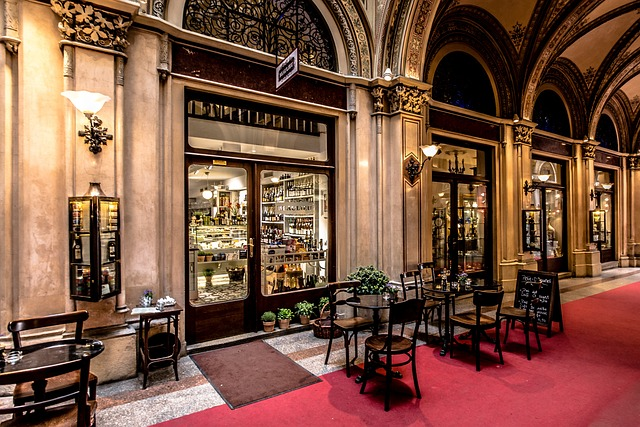
Coffee in England
Coffees history in England dates back to the 1600s, when it was first introduced by the East India Company. It quickly became a popular beverage and had a major influence on British culture. During the 17th century, coffee houses quickly sprang up around London, becoming important meeting places for intellectuals and politicians alike. By 1675, there were an estimated 3,000 coffeehouses in England. Coffee was even the subject of a popular British poem by Robert Southey called "The Way to Make Coffee."
Edward Lloyd's Coffee House was an important hub of commercial activity in the 18th century. Located on Tower Street in London, it served as a meeting place for merchants, bankers, ship owners, and insurance brokers to exchange information and conduct business. It became known as the birthplace of marine insurance and Lloyd's Register of Shipping. In addition to its commercial activities, this bustling coffee house was also a place people would go for entertainment. It had regular performances by musicians and poets, and some of London's most notable writers such as Samuel Johnson, Jonathan Swift, and Alexander Pope were regular visitors.
In the 1800s, the invention of instant coffee allowed it to become more widely available and even cheaper to purchase. Simply adding hot water made drinking coffee a quick and easy at home experience.
It's easy to see that Europeans quickly embraced drinking coffee as an alternative to other beverages like tea or wine. By the 18th century, coffee was firmly established as one of the most beloved drinks in Europe.
Coffee consumption in Europe has grown exponentially since the 18th century. From the modest coffee houses of that era to today's bustling espresso bars and chains, it's estimated that Europeans drink over 25 million cups of coffee per day. In addition to traditional Italian-style espresso drinks, Europeans have embraced cappuccinos, Americanos, lattes and more.

The Humble coffee bean continues its journey
Coffee in America
Coffee has a long and storied history in America. Native to Ethiopia and the Arabian Peninsula, coffee is believed to have been first brought to the Americas by the Dutch East India Company in the 1600s. The earliest record of coffee being consumed in North America dates back to 1668, when it was imported into New York City.
From there, its popularity spread across the continent. By 1773, America was importing over 92 million pounds of coffee annually. America imported most of its coffee from the Caribbean and Central American countries, with some imports also coming from Africa and Asia.
Coffee’s popularity rose even further in the American colonies during the Revolutionary War when tea became harder to import. Patriots sought out coffee as an alternative and it replaced tea as the go-to hot beverage after the Boston Tea Party.
Coffee consumption in the United States has grown significantly over the past few decades. In 2020, Americans consumed an estimated 26.5 million 60-kilogram bags of coffee, up from 17 million bags in 2000. This amount translates to an average of 3.1 cups of coffee per person every day, with a total annual expenditure of $49 billion.
Coffee has become an integral part of many Americans' daily routines, with most people choosing to drink coffee for its energizing properties or simply for the pleasure of its taste. It's estimated that about 83% of adults aged 18 and over in the US drink at least one cup per day. This is likely because convenience stores and coffee shops are now ubiquitous, making it easy for people to get their daily fix.
Not only has the quantity of coffee consumed increased, but so too have the types of coffee being drunk. Cold brew and nitro cold brew coffees, for instance, have surged in popularity in recent years. These specialty drinks may be more expensive than traditional hot brew coffees, but coffee lovers don't seem to mind. In fact, specialty coffee sales now make up 36% of total coffee market in the US.
It's clear that Americans love their morning (and afternoon) cup of joe and are more than happy to pay a bit extra for something special.
Coffee in Australia
Coffee has been enjoyed in Australia since the late 1700s, shortly after the first European settlers arrived. The earliest record of coffee being imported to the country is from 1788, when Captain John Hunter brought a few bags with him on his ship, the Reliance.
Initially, Australians were quite sceptical about this new beverage and it was slow to gain popularity. However, by the mid-1800s, its popularity had grown significantly and coffee houses were popping up all across the country. Many of these establishments were patronized by famous artists and writers who brought a cultural flair to their gatherings.
It wasn't until the 1950s that Australians began to enjoy coffee in their own homes. During this period, coffee's growing popularity meant that electric percolators became popular and it was much easier for people to make their own coffee at home. By the 1970s, the espresso machine had become a common sight in Australian households.
Coffee consumption in Australia has grown significantly over the past few decades. In 2020, Australians drank an average of 1.5 cups per day, an increase of 20% since 2010. The growth in coffee consumption can be attributed to an increasing number of young people drinking coffee, with nearly 60% of 18–24-year-olds consuming some form of coffee every day. Coffee has become a popular choice for those looking to get an energy boost, with the majority of Australians citing convenience, taste and cost as key factors in their decision to purchase coffee-based products. The rise in popularity of specialty coffee beverages has also contributed to this trend, with many Australians turning away from instant coffee and instead seeking out more complex flavours and cold-brewed coffee options. This increased demand has resulted in an abundance of cafes, roasters and specialty coffee shops popping up throughout the country, meaning the delicious scent of roasting beans can be found in many an inner city suburb. Whether it’s a latte, macchiato or cold brew, Australians are finding more ways to enjoy their daily dose of caffeine!
Australians may not be thought to be as passionate about coffee as Europe, they certainly take pride in their own unique culture and coffee heritage. As more Australians become aware of the fact that coffee isn't just a way to stay awake, but that there are many health benefits associated with organic coffee and its unique flavour profile, it's likely that this trend will continue to grow in popularity.

Embracing organic coffee beans
Organic coffee has become a particular favourite amongst consumers as they are able to enjoy the same great taste without having to worry about any potentially harmful chemicals being used in its production.
With organic farming methods, organic coffee plants are grown without the use of synthetic pesticides and fertilizers, which helps preserve their natural flavour and aroma. Organic coffee is also grown using sustainable farming practices that protect the environment and respect local communities.
Additionally, organic coffee is often shade-grown which allows for a more diverse ecosystem and encourages biodiversity. All of this results in a cup that is smooth, flavorful and full of natural aromas - an experience that many people have come to appreciate.
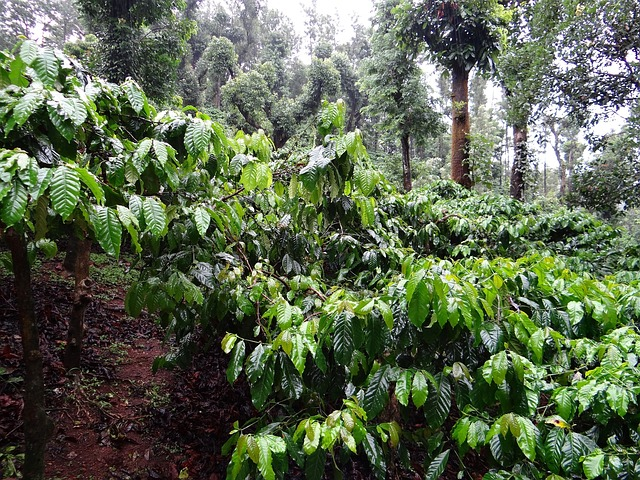
Here at Brew coffee we believe in only drinking the best coffee and that's why we've made it easier to enjoy a cup of delicious organic coffee at home.
With our revolutionary winged filters, individually packed for freshness you can enjoy a delicious cup of organic coffee no matter where you are. Find out more here.
Summary
So there you have it, the fascinating story of how coffee became popular, where we are with coffee now and why organic coffee remains a favourite amongst consumers today. With its energizing properties and delicious taste, coffee is here to stay! So why not try some for yourself today? You won't regret it!
